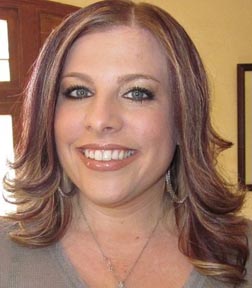It can be difficult to believe one person can make a difference, but Farrah Vacca, a student at the University of Alabama at Birmingham, helped change a standard created by the California Division of Occupational Safety and Health with a thoughtful comment.
 Vacca, a safety professional for a Bay Area major pharmaceutical company was enrolled in EGR 616: Policy Issues in Prevention through Design, an online course in the master’s program for Advanced Safety Engineering and Management in the UAB School of Engineering. She was assigned to find a safety standard that was open for public comment and comment. She noticed Cal/OSHA had written the first safety standard for microtomes — blades of steel, glass or diamonds that cut extremely thin slices of material for observation in microscopy — that are used by Vacca’s company.
Vacca, a safety professional for a Bay Area major pharmaceutical company was enrolled in EGR 616: Policy Issues in Prevention through Design, an online course in the master’s program for Advanced Safety Engineering and Management in the UAB School of Engineering. She was assigned to find a safety standard that was open for public comment and comment. She noticed Cal/OSHA had written the first safety standard for microtomes — blades of steel, glass or diamonds that cut extremely thin slices of material for observation in microscopy — that are used by Vacca’s company.
“Cal/OSHA’s standard said to keep hands one inch from the blade and recommended using a device, such as tweezers, which is cumbersome and not the ideal fix for the problem,” said Vacca. “I talked to the microtome users in our shop and they said handling the blade with tweezers makes it less safe, so my comments focused on the principal of prevention through design — fixing the systemic problems of the design, the way it is manufactured and the safe guards that are in place.”
Cal/OSHA’s summary and response said Vacca’s public comments would provide better safety than the existing standard. The board added that although they regulate employers, not manufacturers, Vacca’s input may “induce manufacturers to take a fresh look at their equipment and develop designs that will move in the direction of engineering out the hazards” over time.
Jennifer Bailey, MSPH, is the safety manager at American Cast Iron Pipe Company and a UAB adjunct professor who teaches the EGR 616 course. ASEM is the only masters of engineering degree with a safety emphasis offered wholly online. The course teaches professionals around the world where to find safety standards and make a comment. She wants each student to know their work does not need to be limited to their work area, their building or their company — one person’s efforts can impact their industry.
|
“It is comforting to know, as a safety professional, that you can have a voice in helping change and guide the policies and regulations that are put upon you before they are actually put upon you." -Farrah Vacca |
“I want our students to learn that they can be part of the solution whether it is a federal standard, state standard or consensus standard so we are teaching safety professionals a faster way to have a bigger impact on overall safety,” Bailey said. “Ultimately our goal is to get everybody – employees, employers, safety managers and government regulators – thinking about prevention through design rather than a less effective control.”
Vacca adds, “It is comforting to know, as a safety professional, that you can have a voice in helping change and guide the policies and regulations that are put upon you before they are actually put upon you. It is a good feeling to be able to have that effect in an industry.”
The open period for comments on the amended California state standard section 3207 closed June 8, 2012. The proposal will be scheduled for adoption at a future business meeting of Cal/OSHA.
